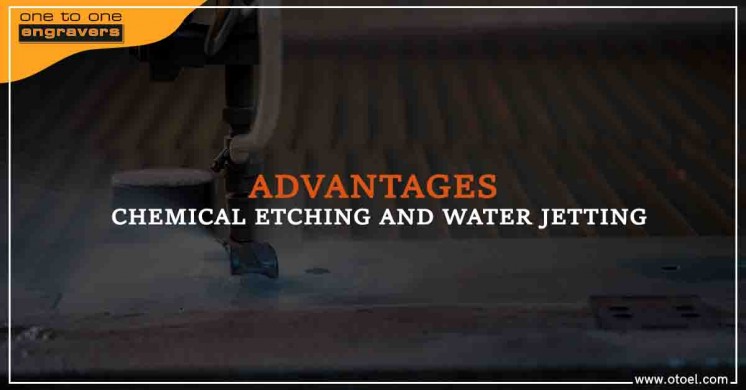UK-based suppliers, applicators and trainers. Call us today to get a free sample : 01604 644604


Water Jetting is an industrial cutting and etching process indulging the jet of water with high pressure or mixing it with abrasive particles for cutting hard and brittle as well as soft materials. The nozzle is used to create a focused beam of water to cut various materials like ceramics, rock, titanium alloys, wood, and rubber. Chemical Etching is another method for engraving and etchingwhich uses chemical spray with high pressure and high temperature to etch or engrave the design on the metal surface. Heat and stress-resistant products can be crafted at affordable cost and high speed.
Differential evaluation between two major etching solutions, water jetting and chemical etching, can be done on the basis of various parameters like flexibility, cost-effectiveness, precision, and time.
Cost-effectiveness- Chemical Etching is one of the cost-efficient processes for etching metals as it does not require special machinery and set up costs. It is an economical solution for both small scale and large scale industrial production and fabrication. Whereas, water jetting is an expensive solution because of its high operational cost.
Time span- Out of the two etching solutions, water jetting is a more time-consuming procedure than chemical etching. Water jetting processes the elements individually one by one which makes it slower in comparison to chemical etching which has a quicker lead time. The etching is done simultaneously in chemical etching which gives it ascendancy.
The flexibility of design- In terms of flexibility, both the solutions are at par. Both processes can handle a broad spectrum of metals and material. Designs and patterns can be easily changed and modified quickly with a nominal increase in the cost.
Quality and Exactitude High quality of products can be fabricated with chemical etching. Precision is clearly an advantage of chemical etching. No distortion can be seen even in complicated designs. Edges are well defined after chemical etching. In water jetting, marks and hazing can be noticed near cuts. Control of depth of cut can also be a challenge at times in the latter.
Both solutions have their pros and cons. Given scenarios like the scale of production, thickness, and type of materials, etc. can help to decide upon the apt method for etching. For hard and thick material, the water jetting technique is preferable. Large scale production and precision are the allies of chemical etching. Thin metal sheets can also be easily engraved with the chemical etching process effectively.
If you are unable to decide on technique, we are readily available to help you with valuable suggestions and high precision services in the U.K. Specialized chemical etching services are provided by our experienced and well-versed team based in the U.K. at a reasonable cost